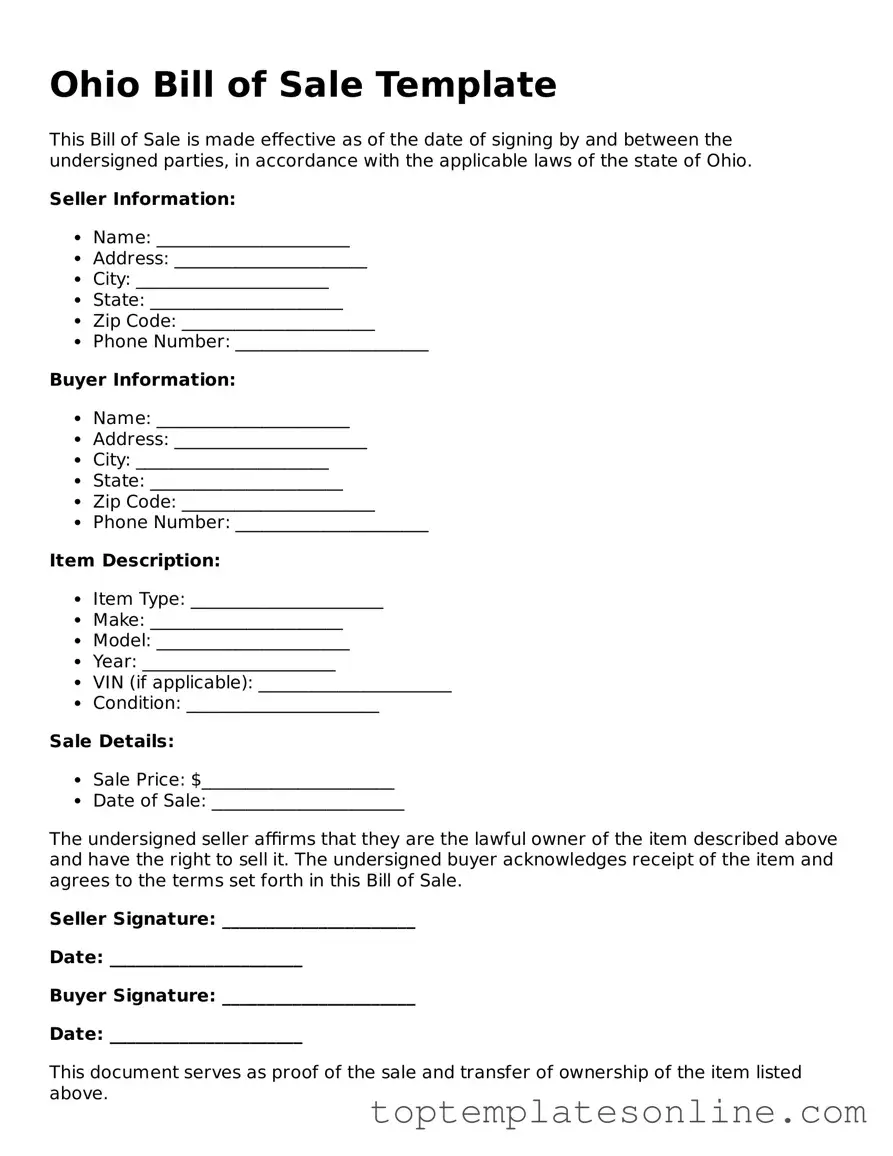Blank Bill of Sale Template for Ohio State
The Ohio Bill of Sale form is a legal document used to transfer ownership of personal property from one party to another. This form provides essential details about the transaction, ensuring both the buyer and seller have a clear record of the sale. Understanding its components can help facilitate a smooth transfer process.
Customize Bill of Sale Here
